
a
a - e Typical Type 1 saggar rim sections, all from Gloucester, 99 Westgate Street. All are from cylindrical forms ranging from 300mm to 360mm in diameter. Fabric - white clay matrix with mineral inclusions. 1870-5
f & g Sections of Type 4 rectangular saggars with vertical sides from Gloucester, 99 Westgate Street. Fabric - white clay matrix with mineral inclusions. 1870-5
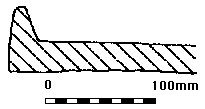
h - Section of Type 5 rectangular saggar with shallow upstanding
edge from Lewes, Pipe Passage. Fabric - white clay matrix with
mineral, crushed pipe inclusions and voiding from combusted organic
matter. 1830-70

i - Section of Type 5 rectangular saggar with shallow upstanding
edge from Gloucester, 99 Westgate Street. In the broken section
details of the stages of manufacture can be seen. Fabric - white
clay matrix with mineral inclusions. 1870-5
j & k Sections of Type 3 rectangular saggars with inward leaning sides from Gloucester, 99 Westgate Street. Fabric - white clay matrix with mineral inclusions.1870-5 Similar sections are recorded from Bristol, Mead Street. Fabric - white clay matrix with self coloured grog. 1850-65
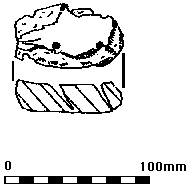
l - Small bat fragment with six tapering holes some of which pass
right through, from Pipe Aston, Herefordshire. Fabric - white
clay. 1650-1700
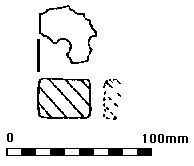
m - Fragment from a pierced bat with at least one straight edge
from Chard, Silver Street. Fabric - white clay matrix with quartz
and other mineral inclusions. 1675-1700
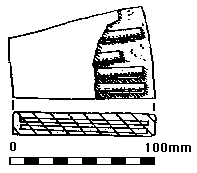
n - Trapeziform bat reinforced with pipe stems from Birtley Farm,
Herefordshire. One of two surviving though the excavator recalled
there being many more, sufficient in fact to provoke his postulated
reconstruction of the kiln built entirely from these objects [an
unlikely prospect]. Fabric - white clay. 1650-1700
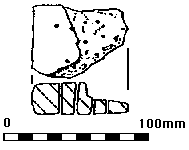
o - Fragment from a pierced bat with at least one straight edge
from Bristol, Gravel Street. Fabric - white clay matrix with voiding
from combusted organic matter. Late 18th century

p - Fragment from a pierced bat with at least one straight edge
from Bristol, Gravel Street. Fabric - white clay matrix with mineral
inclusions. Late 18th century
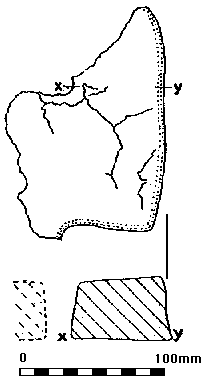
q - Fragment from a pierced lobed or indented bat from Bristol,
Lewins Mead. Fabric - white clay. 1707-39
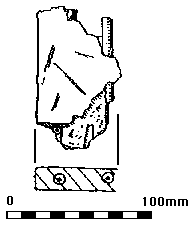
r- Fragment from a bat with at least one straight edge, reinforced
with pipe stems, from Durham, Back Silver Street. Fabric - white
clay matrix with voiding from combusted organic matter. 1800-50